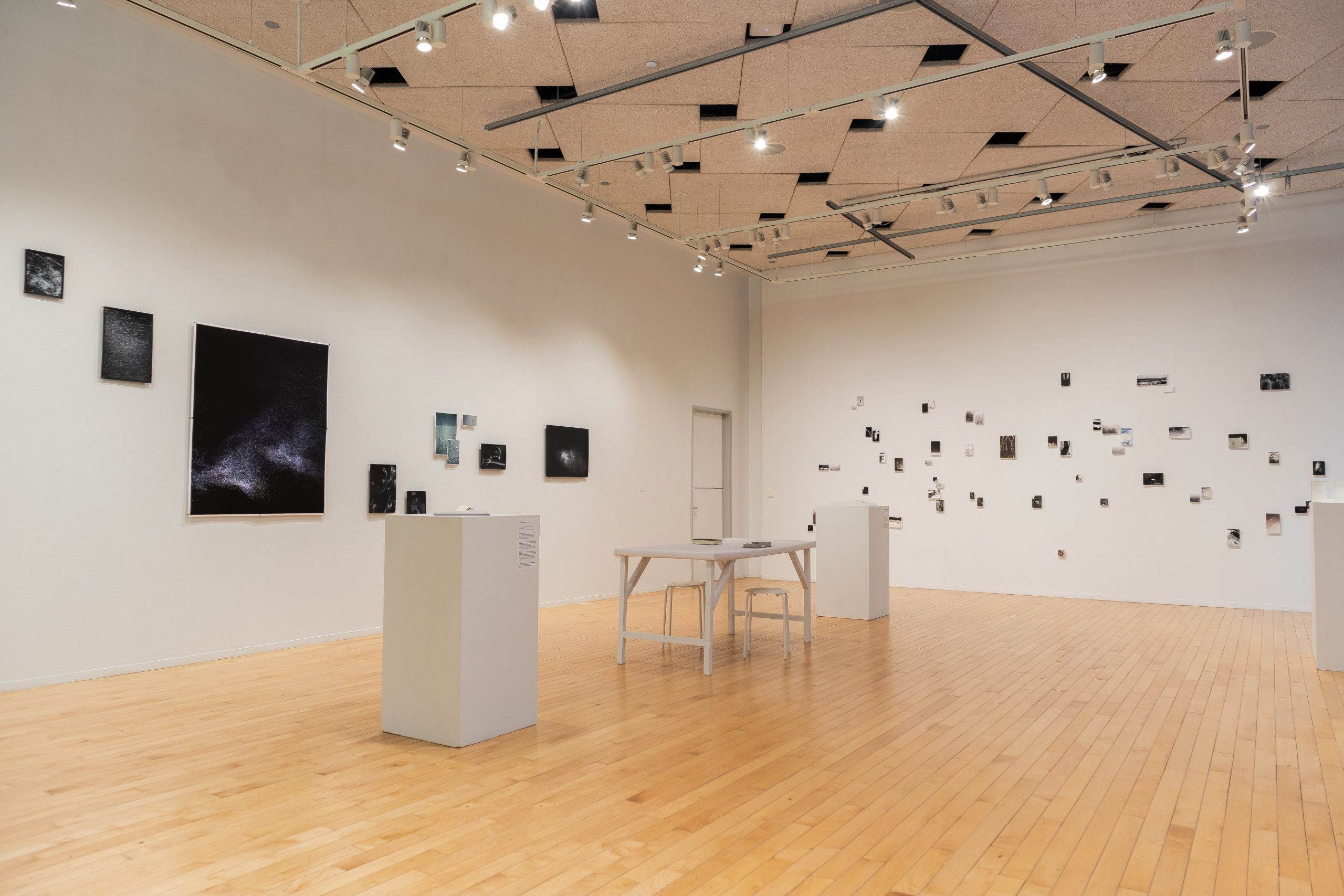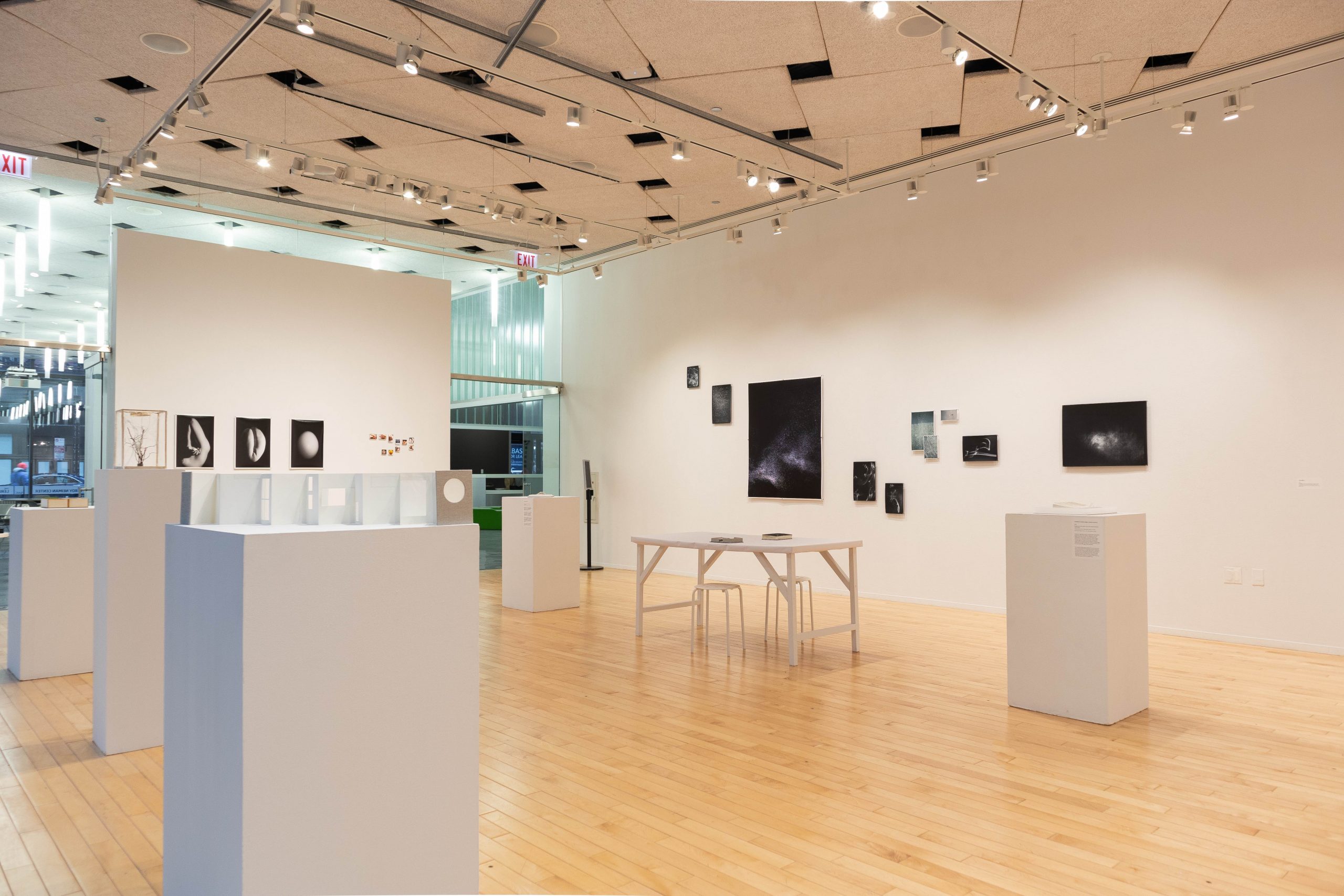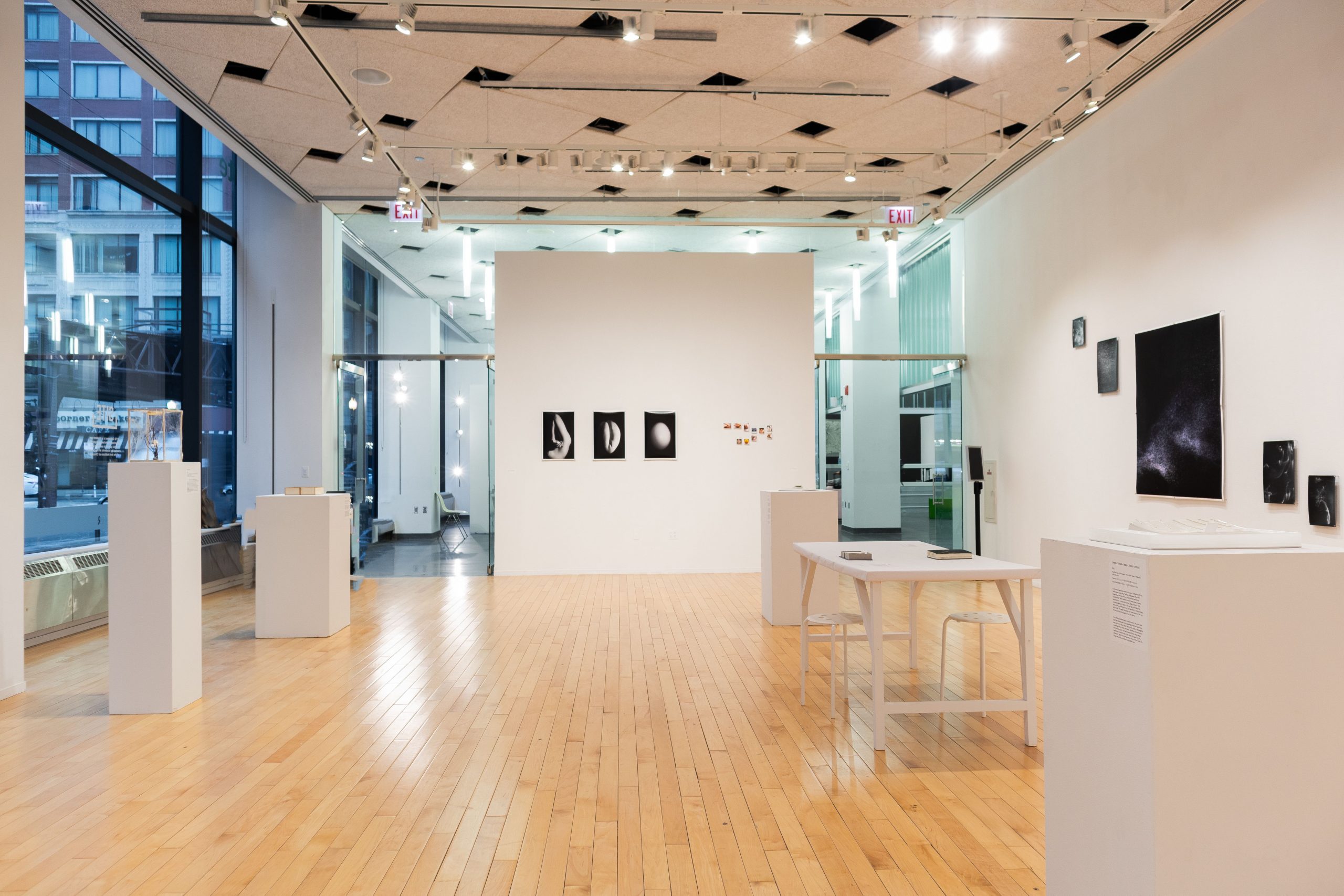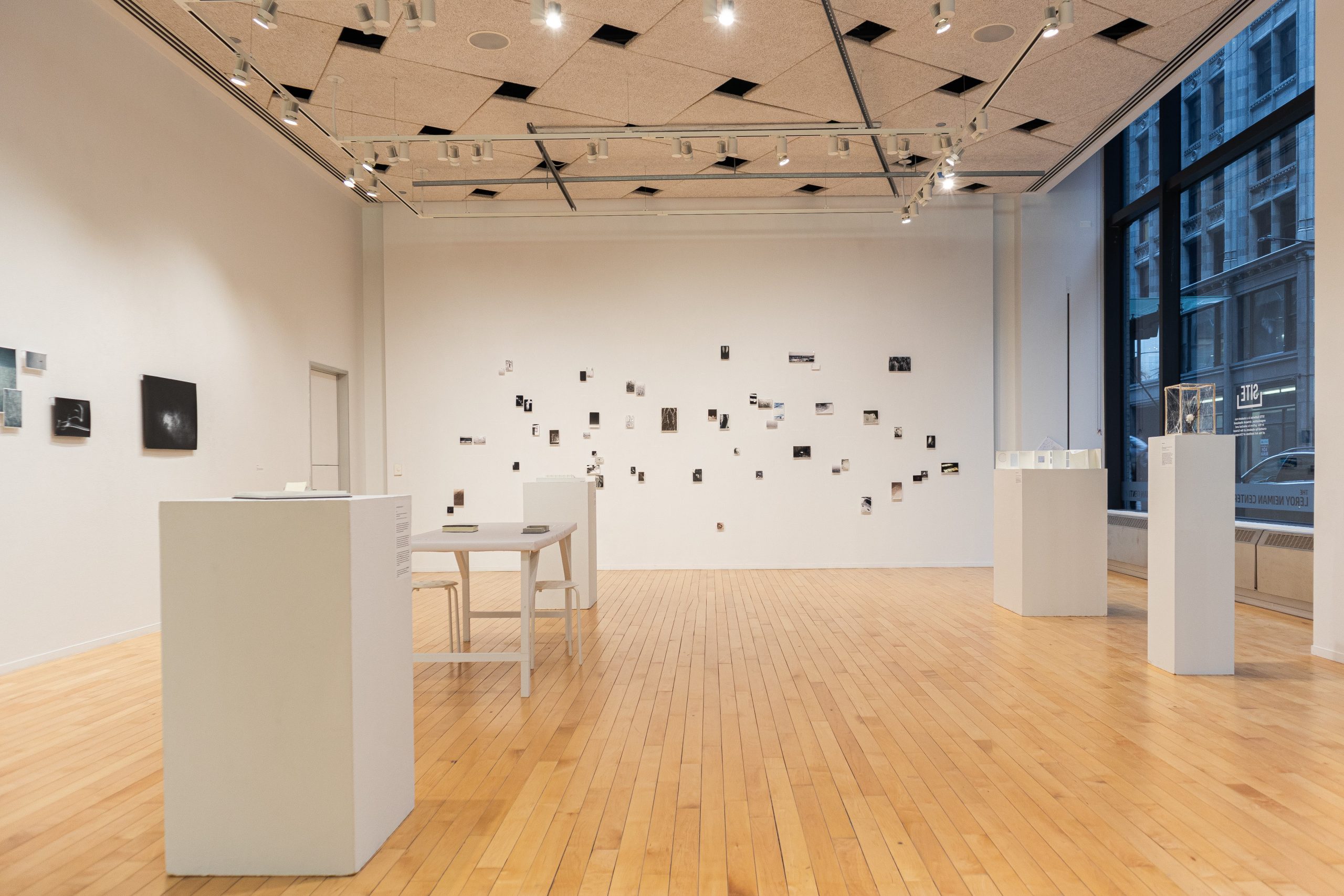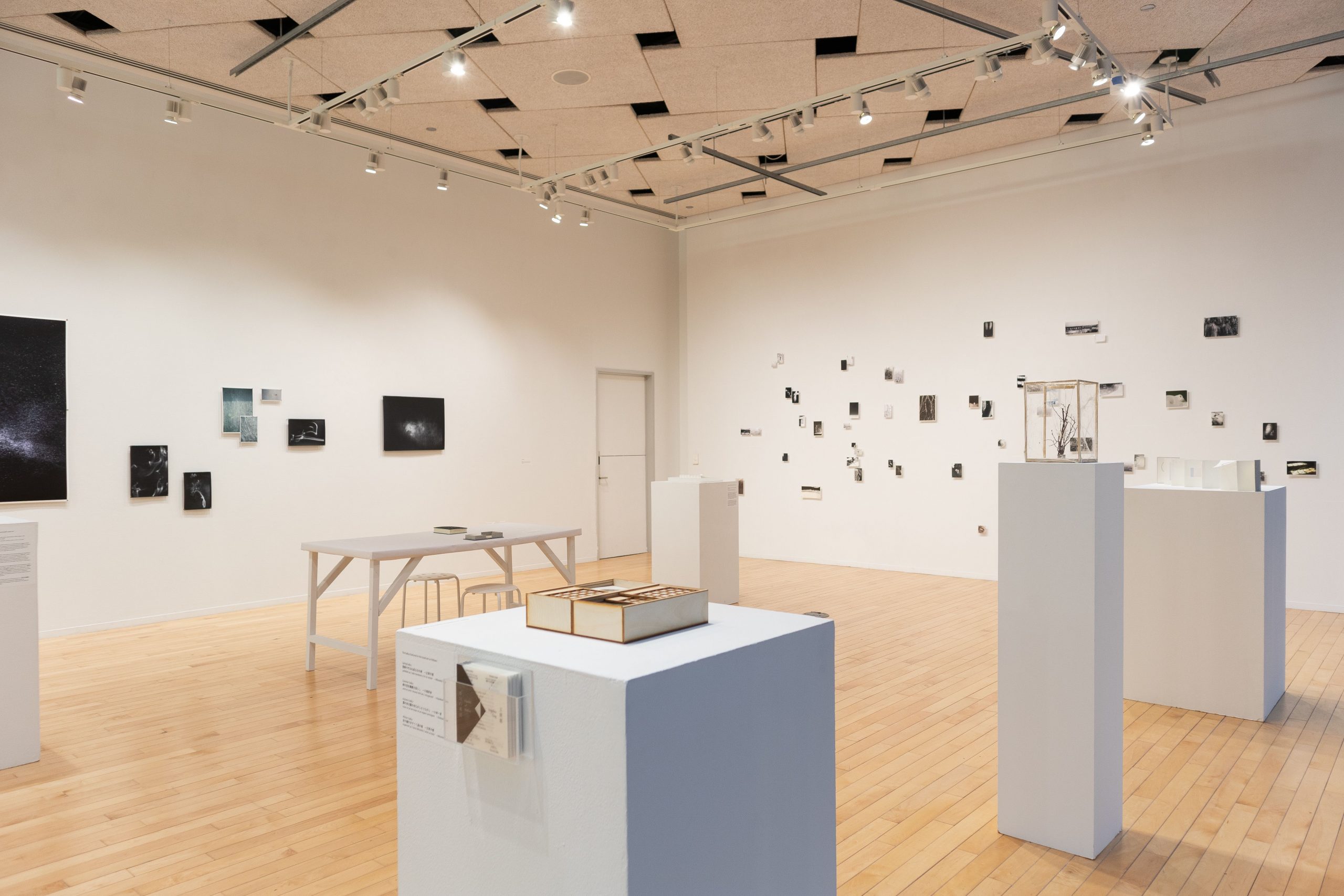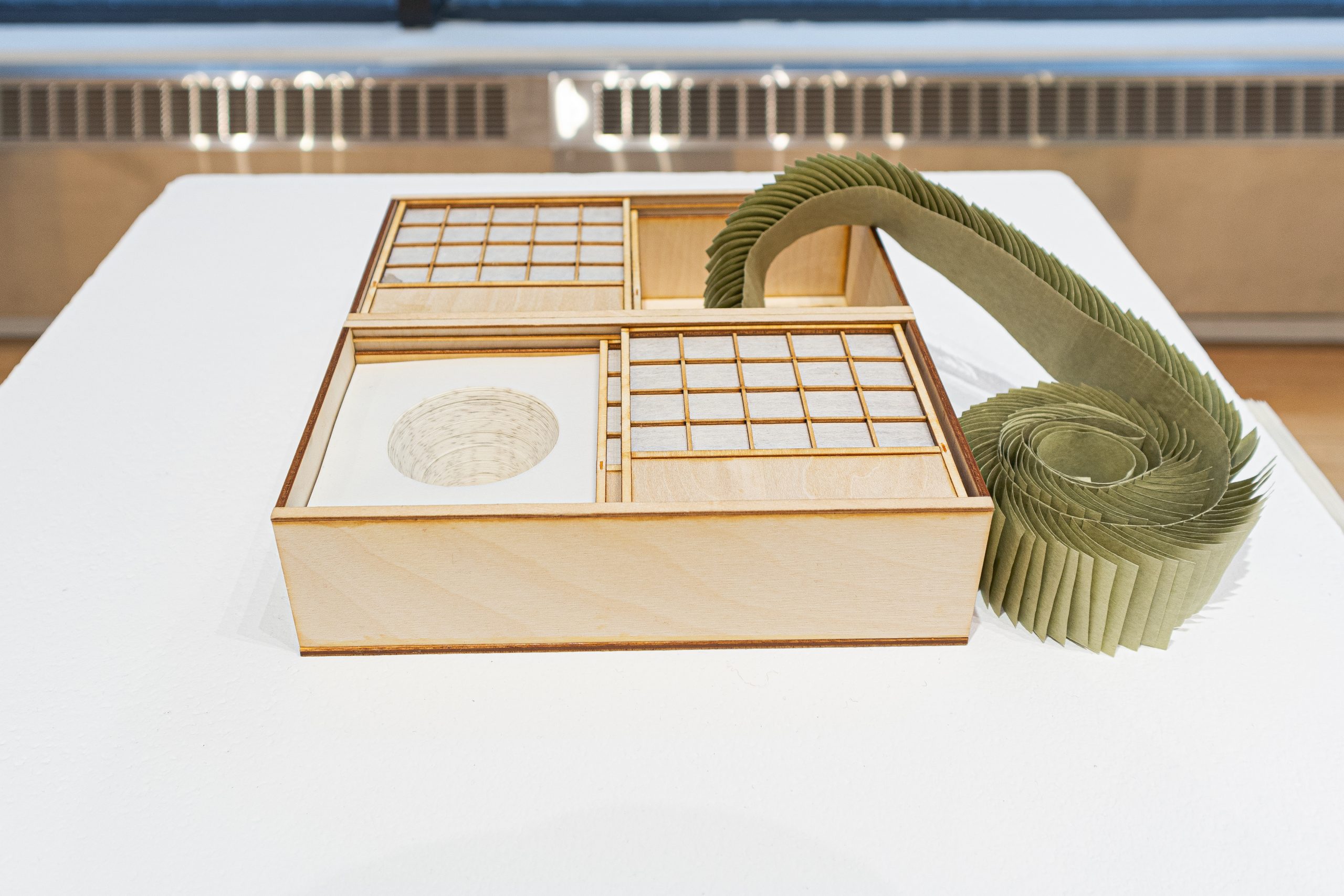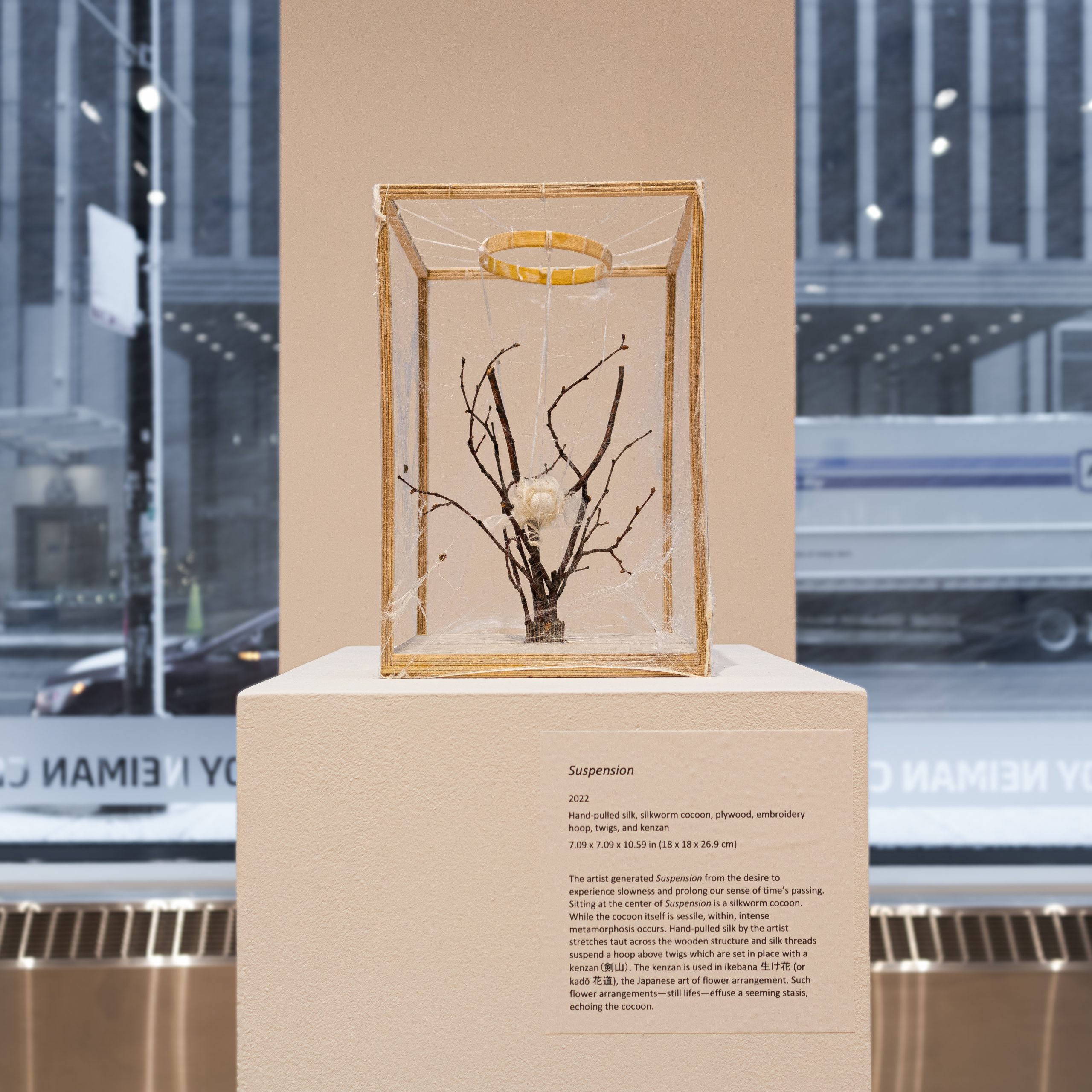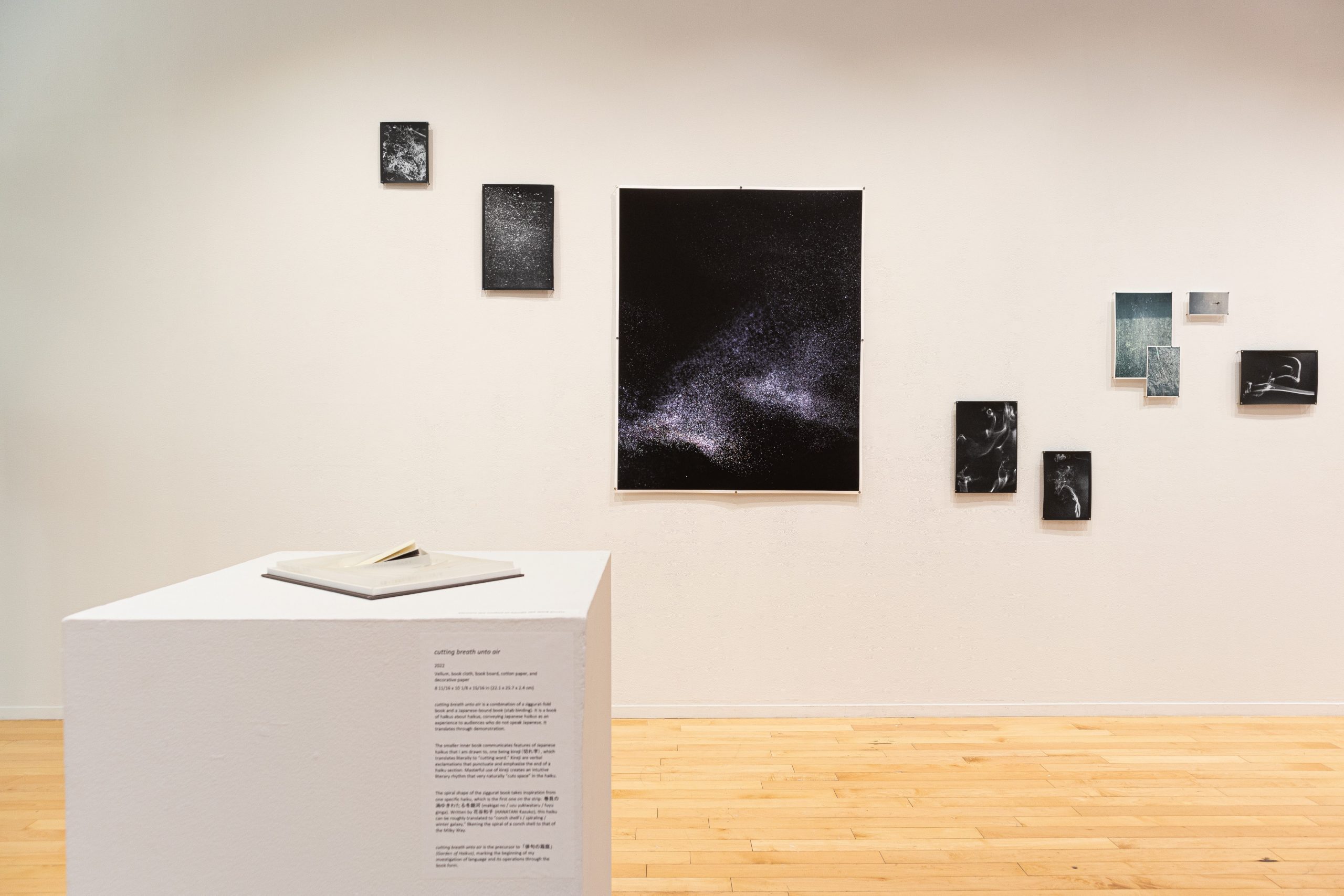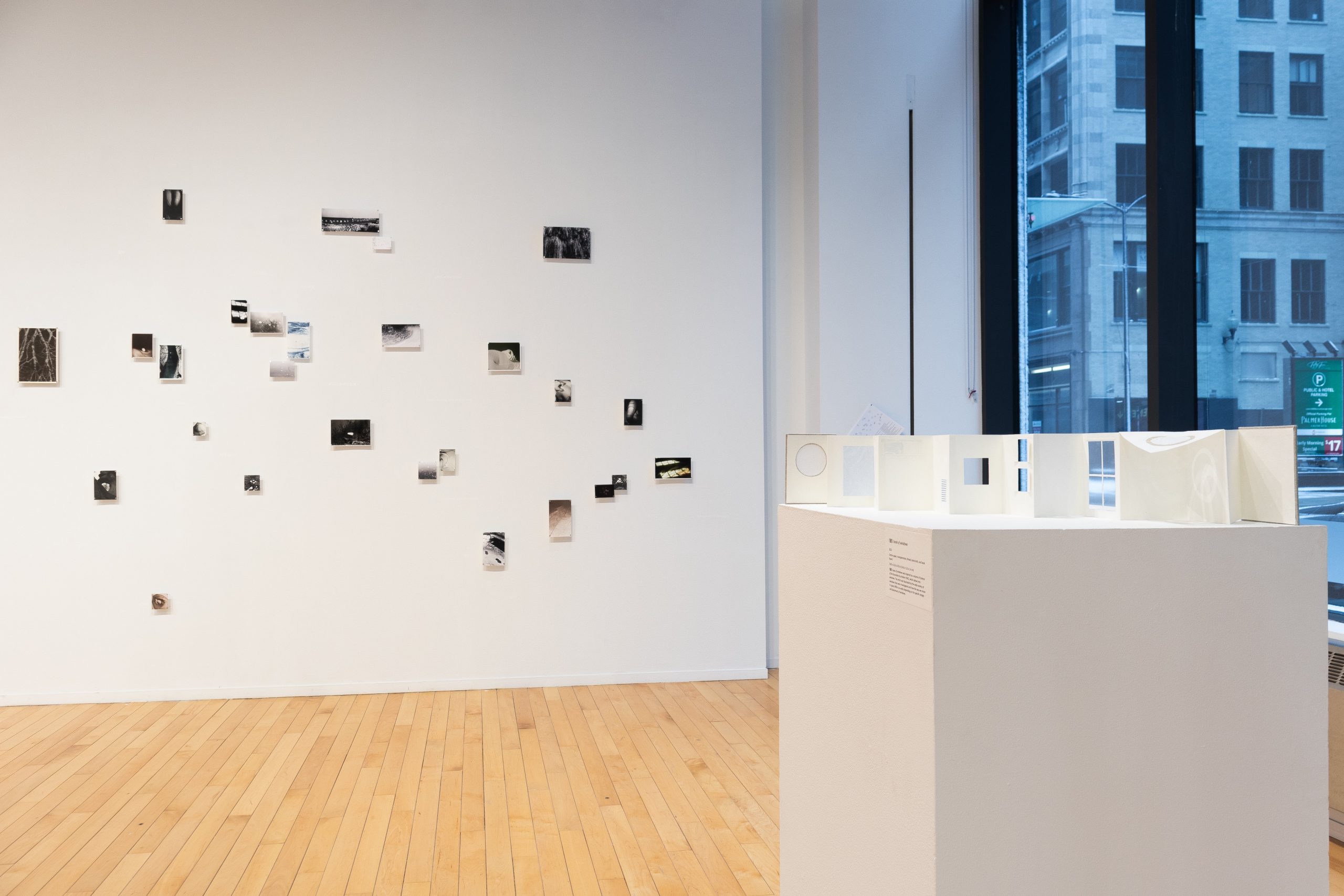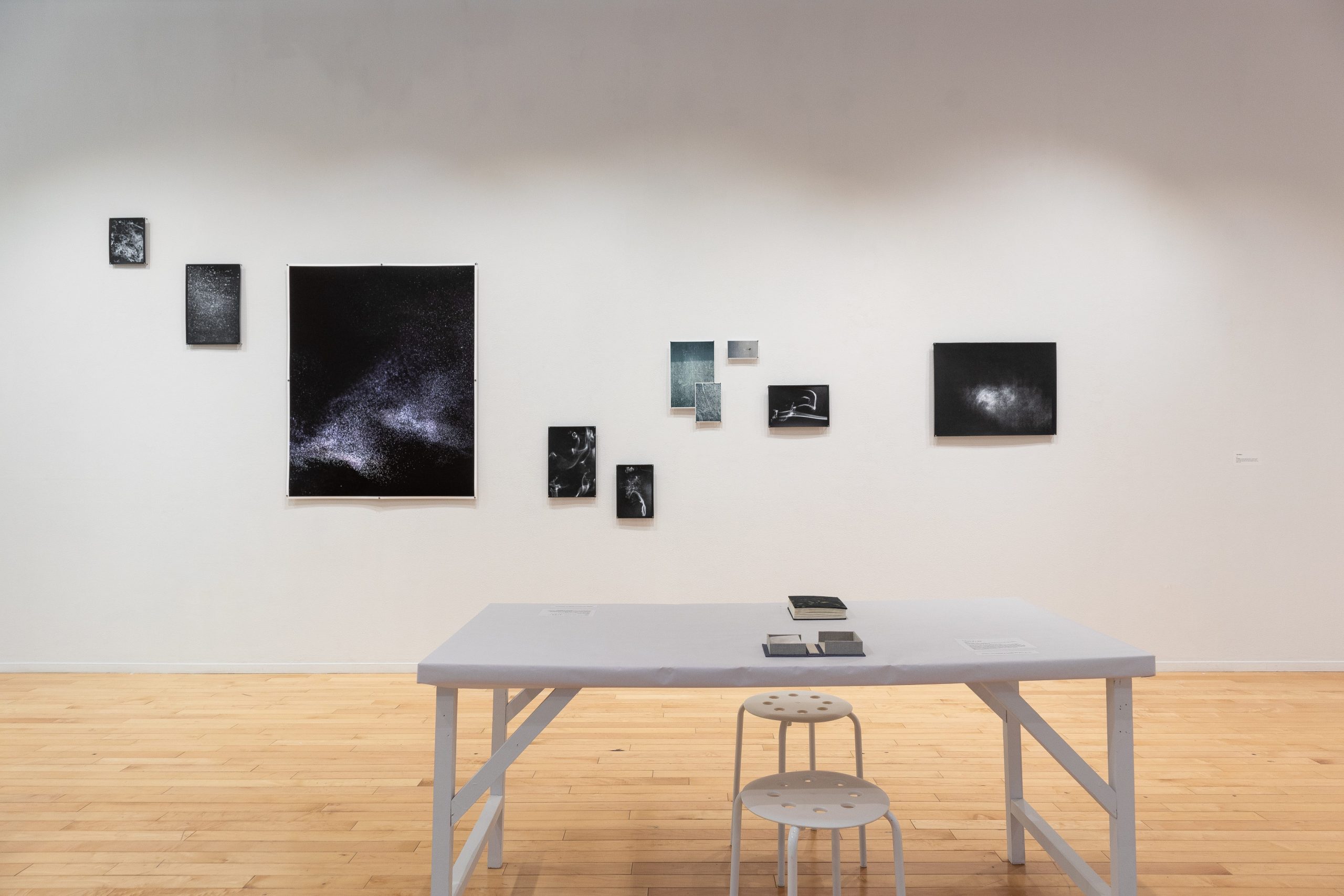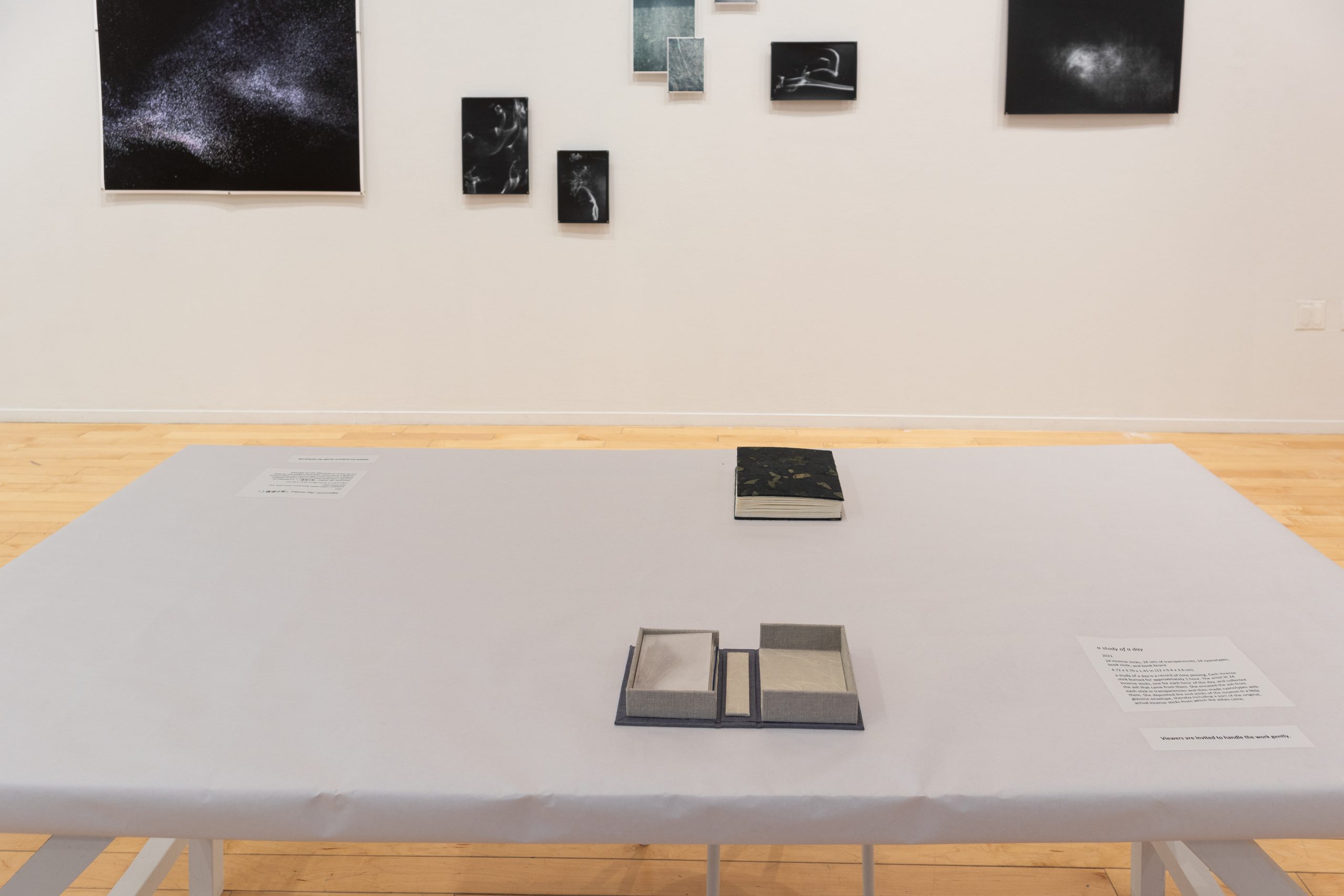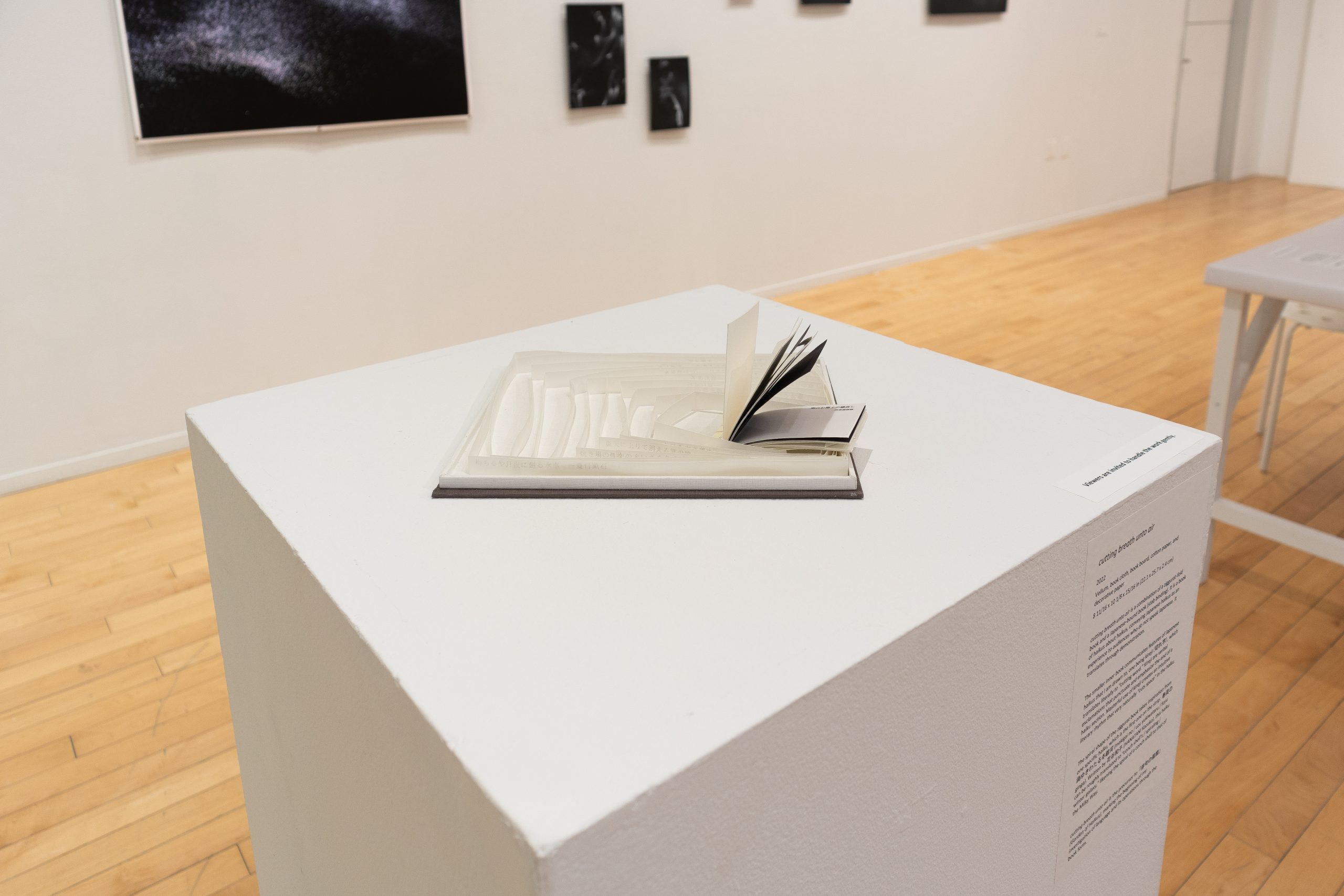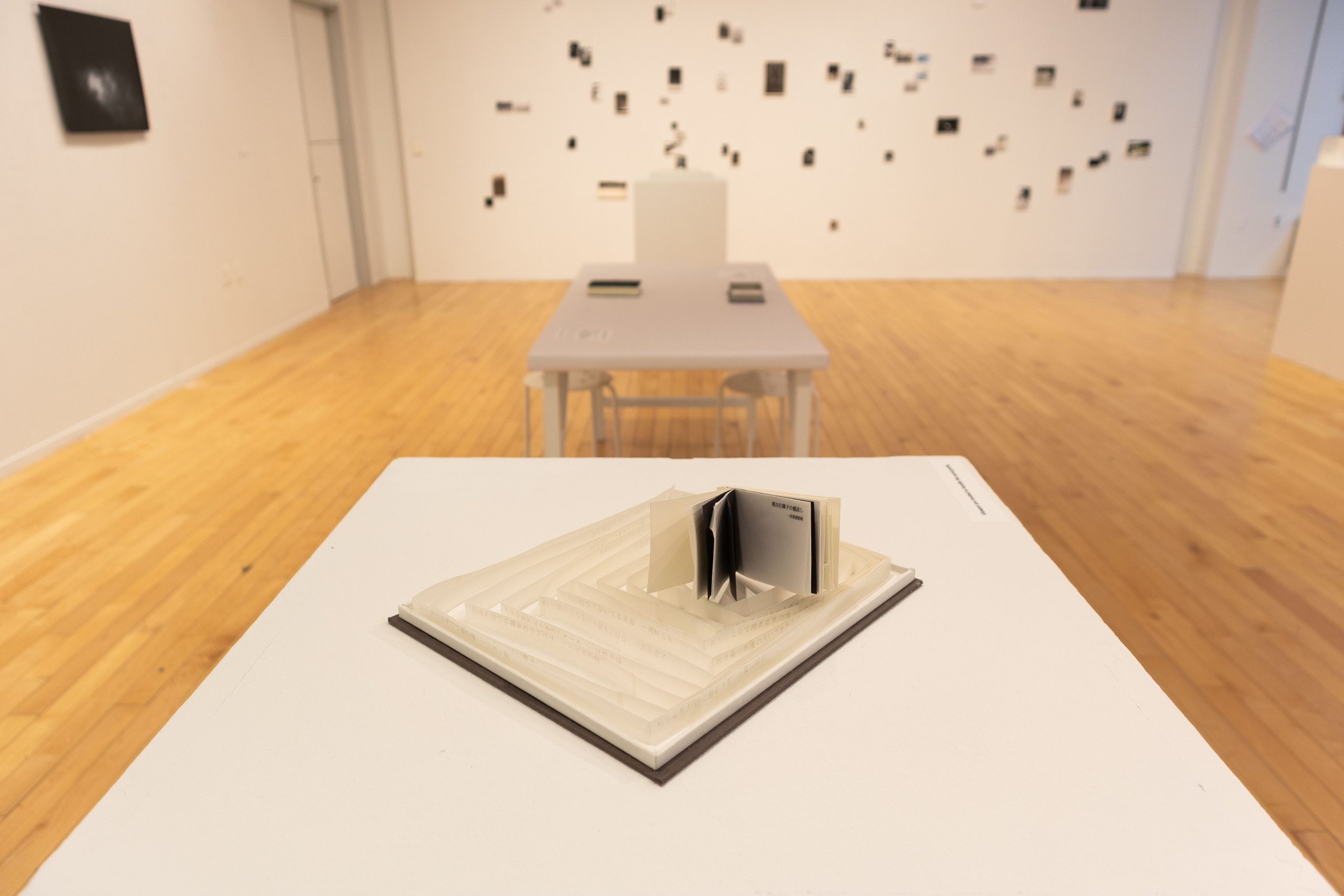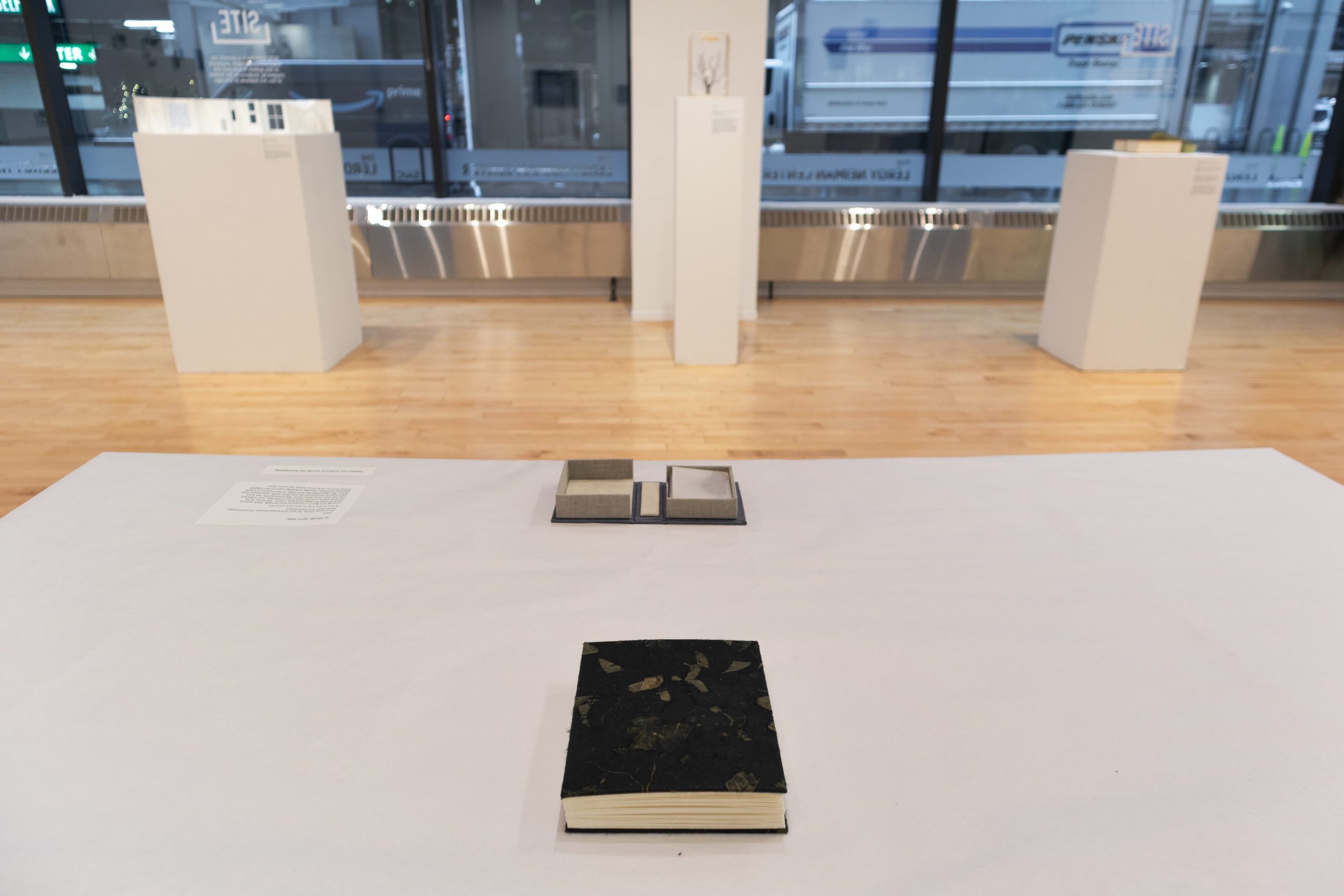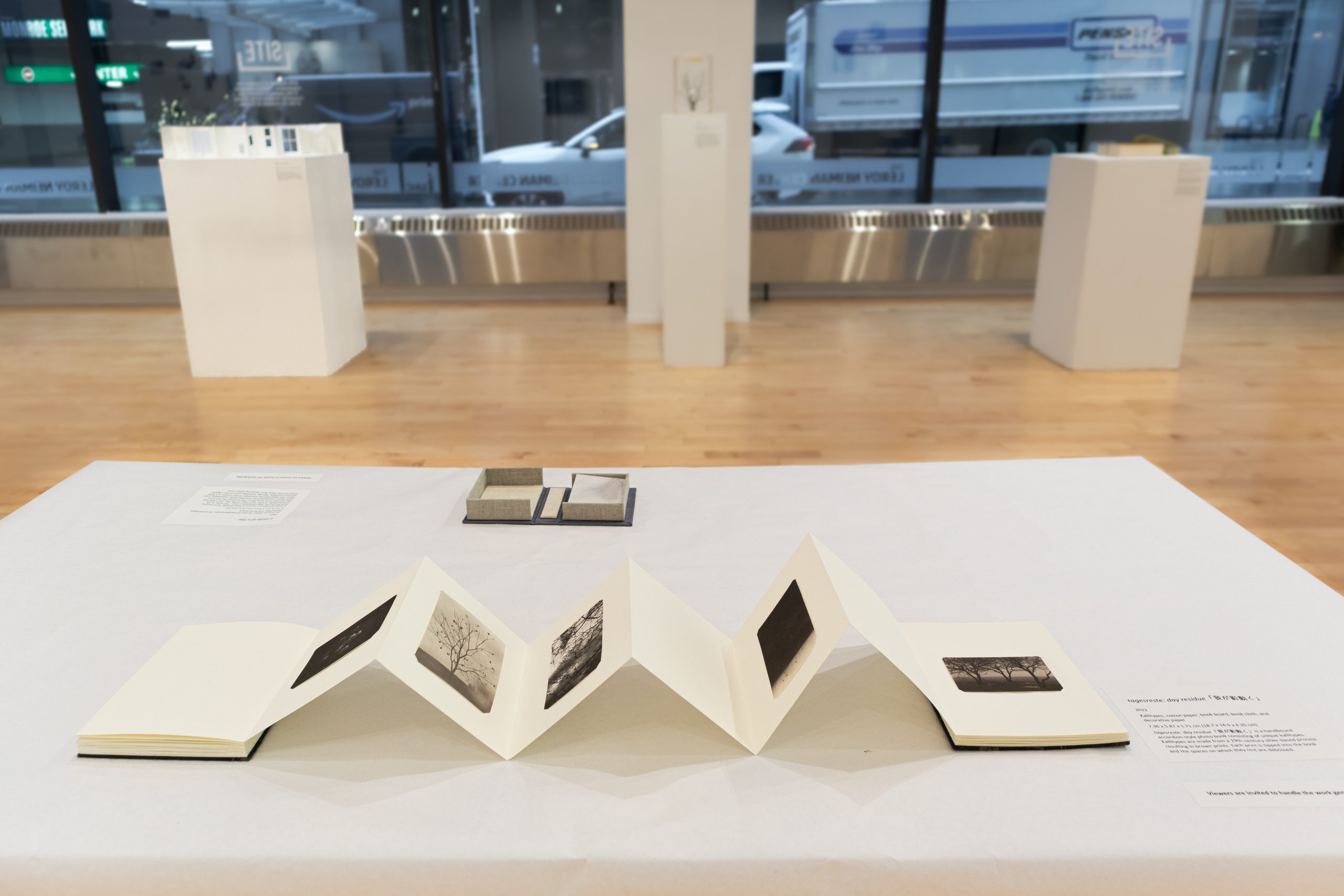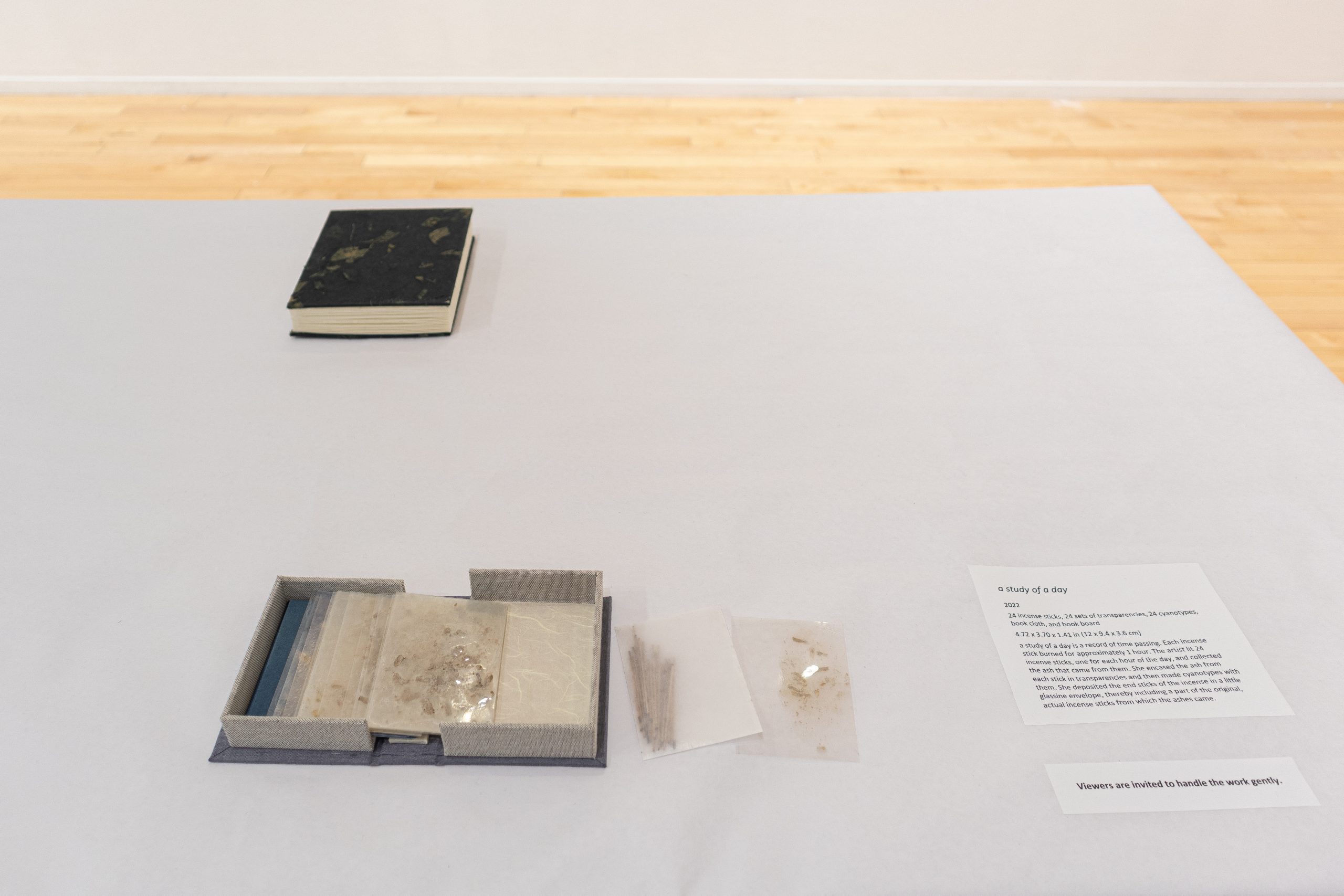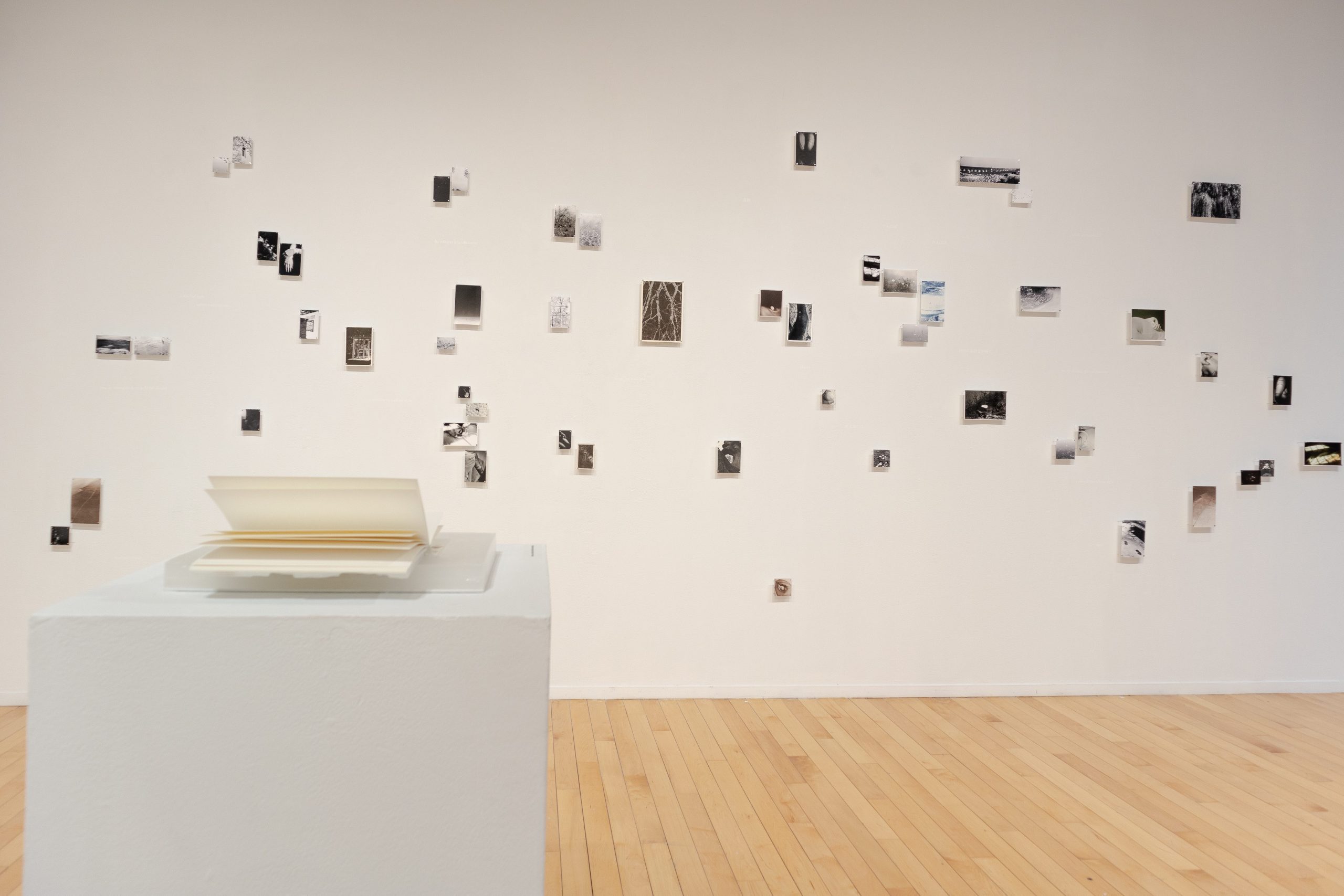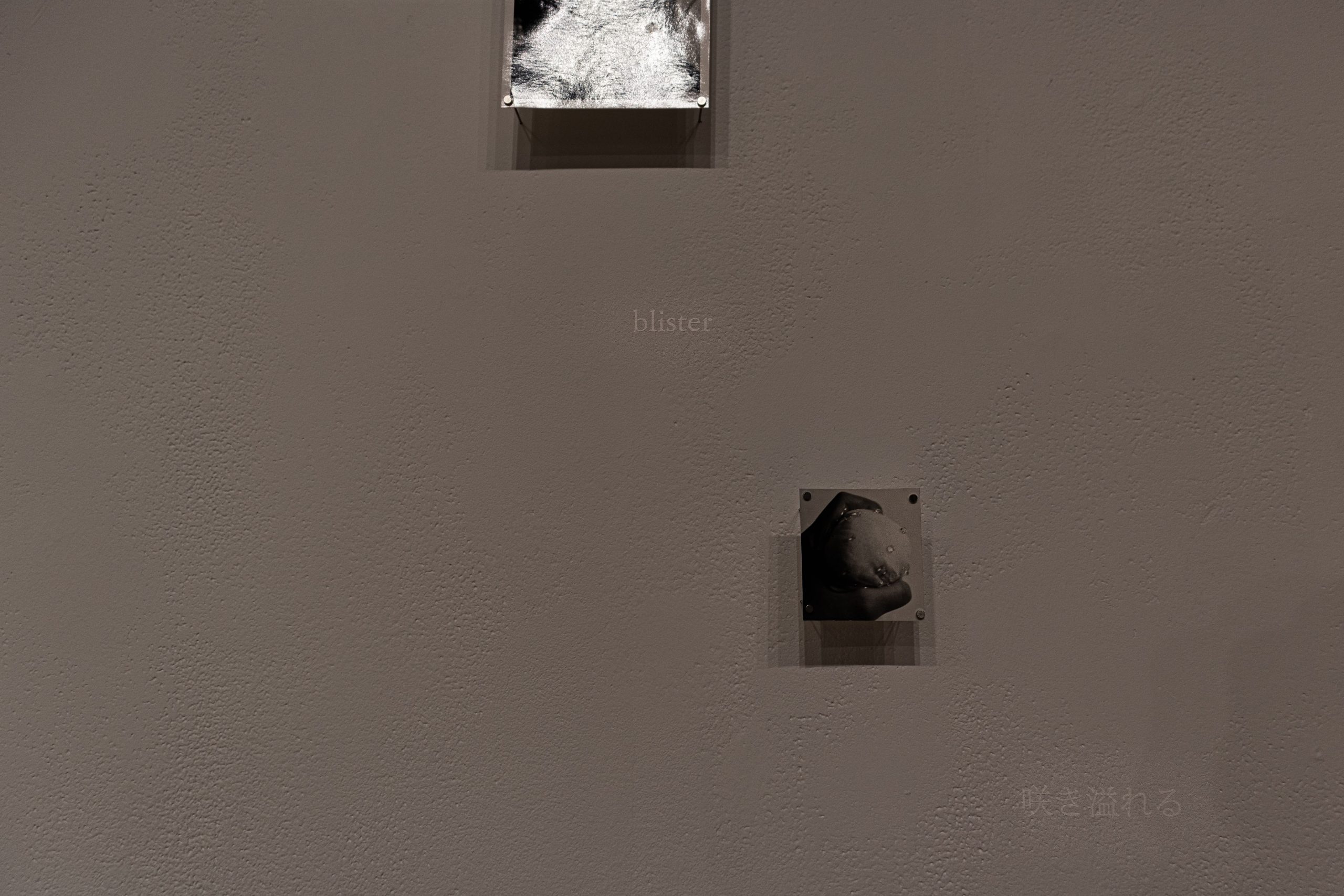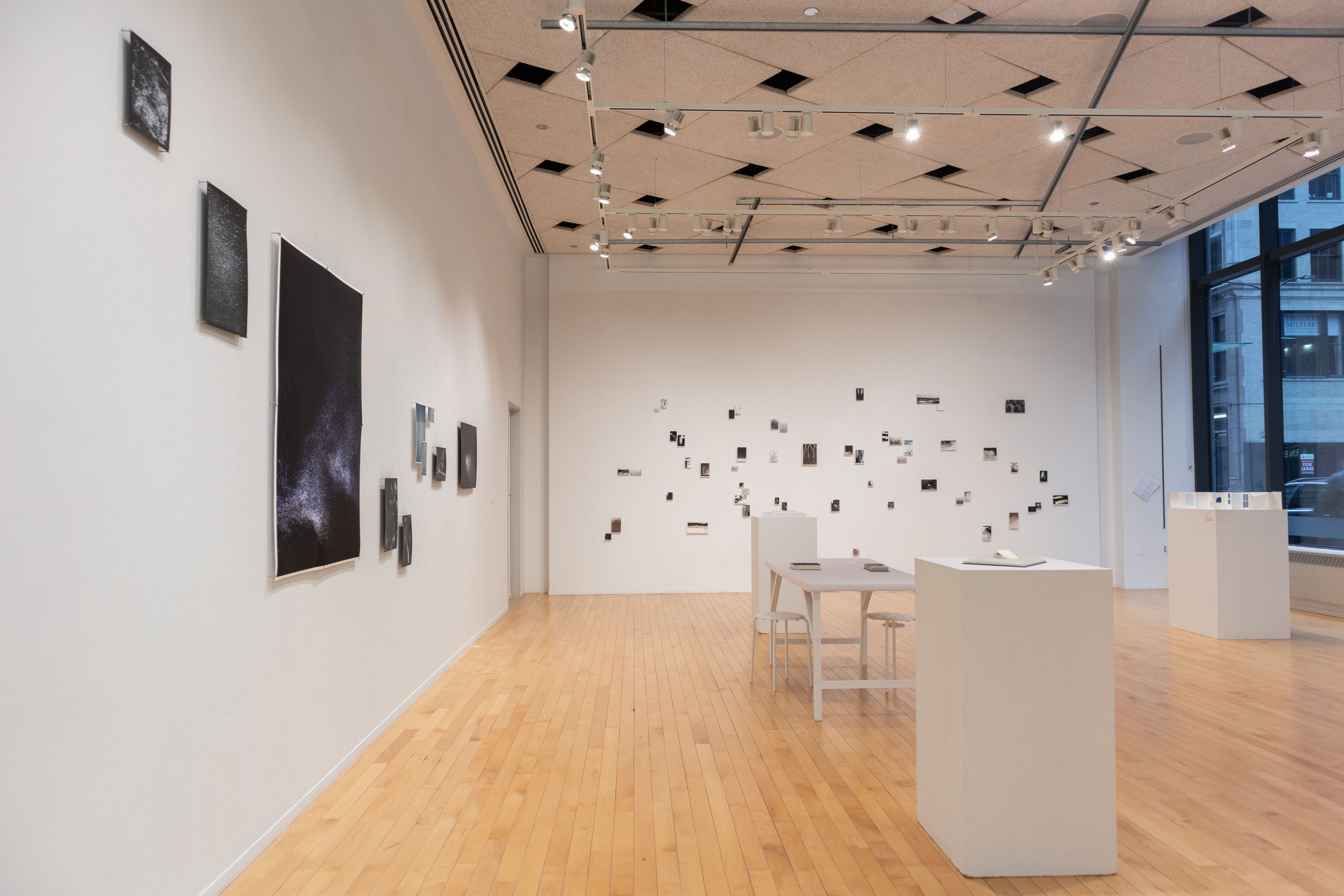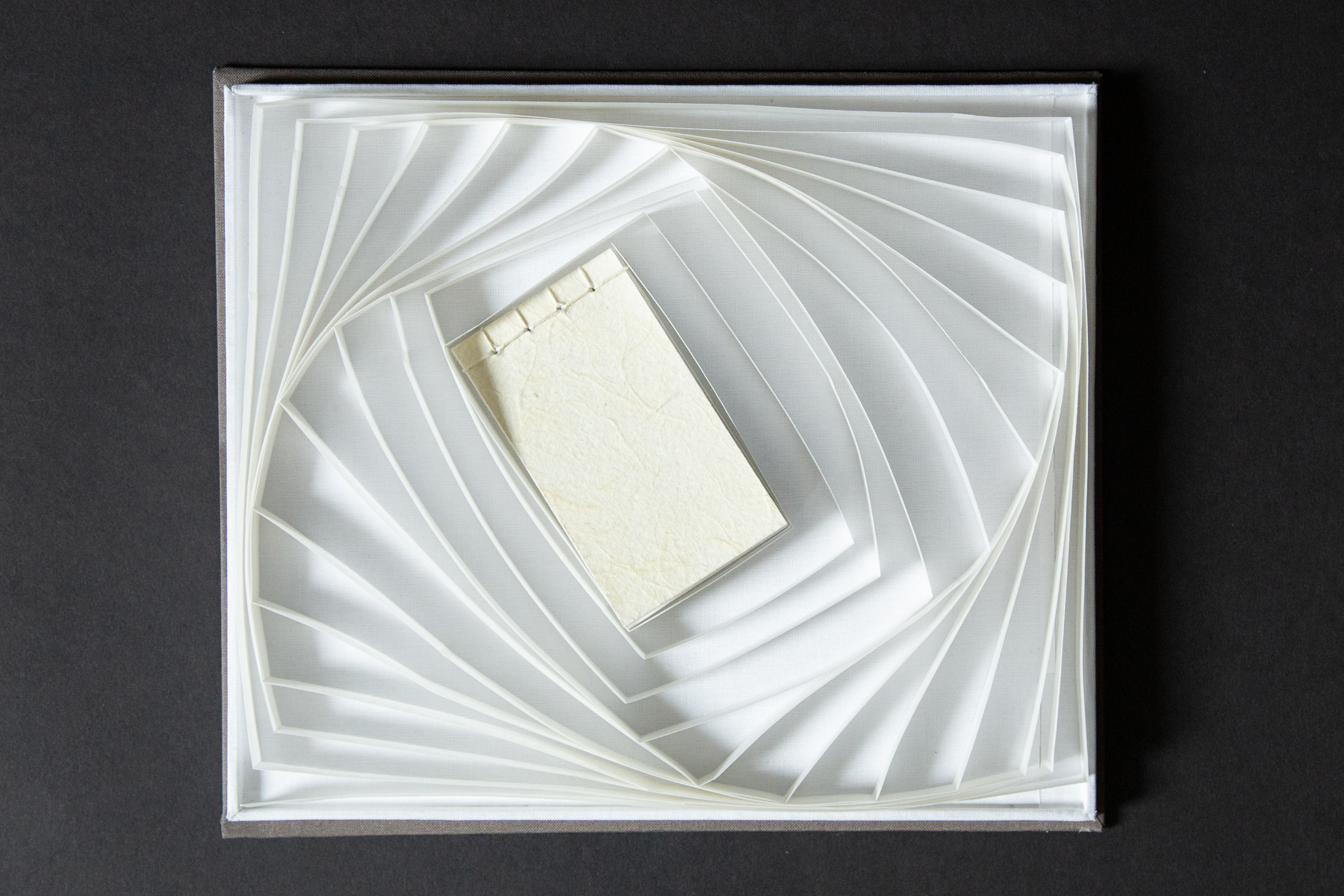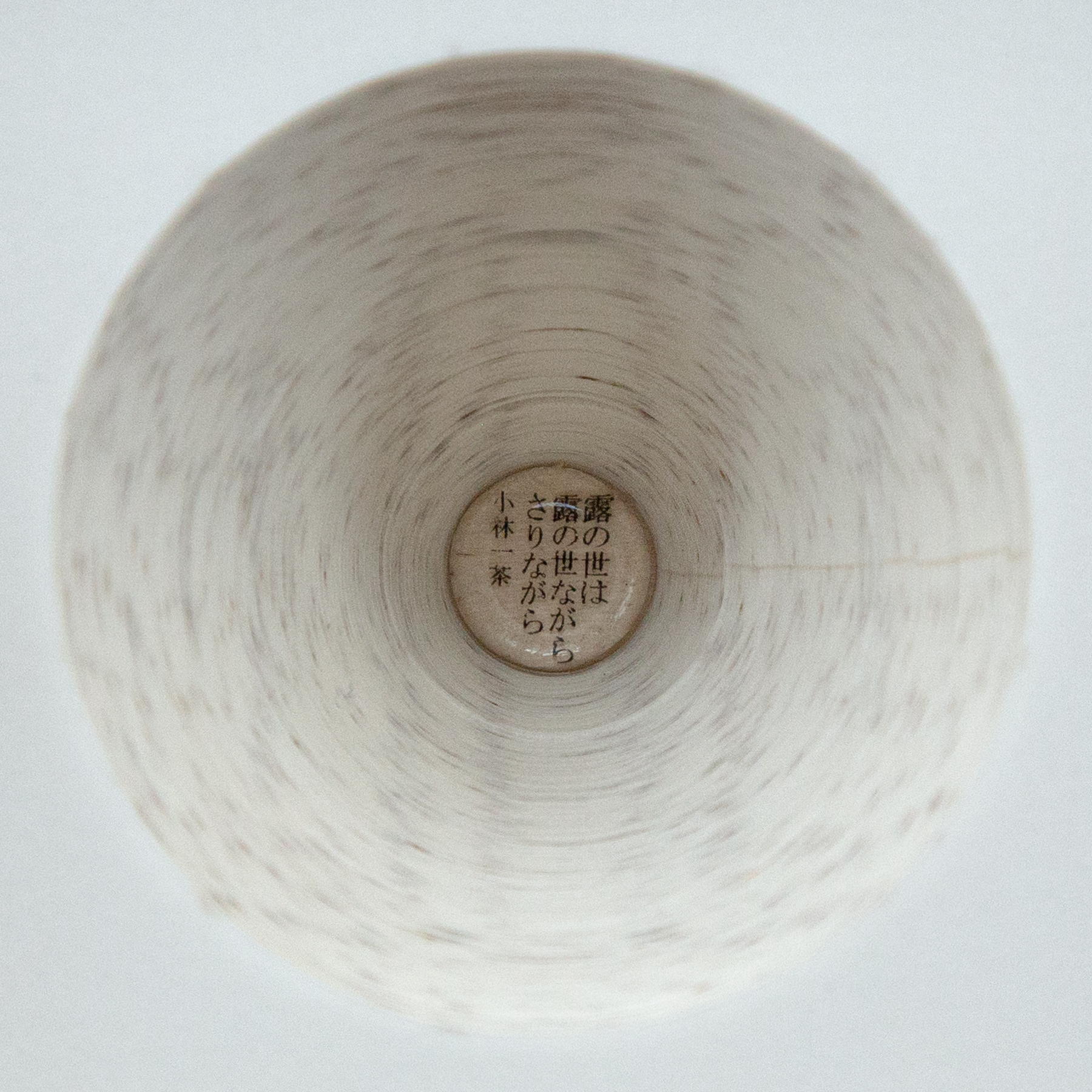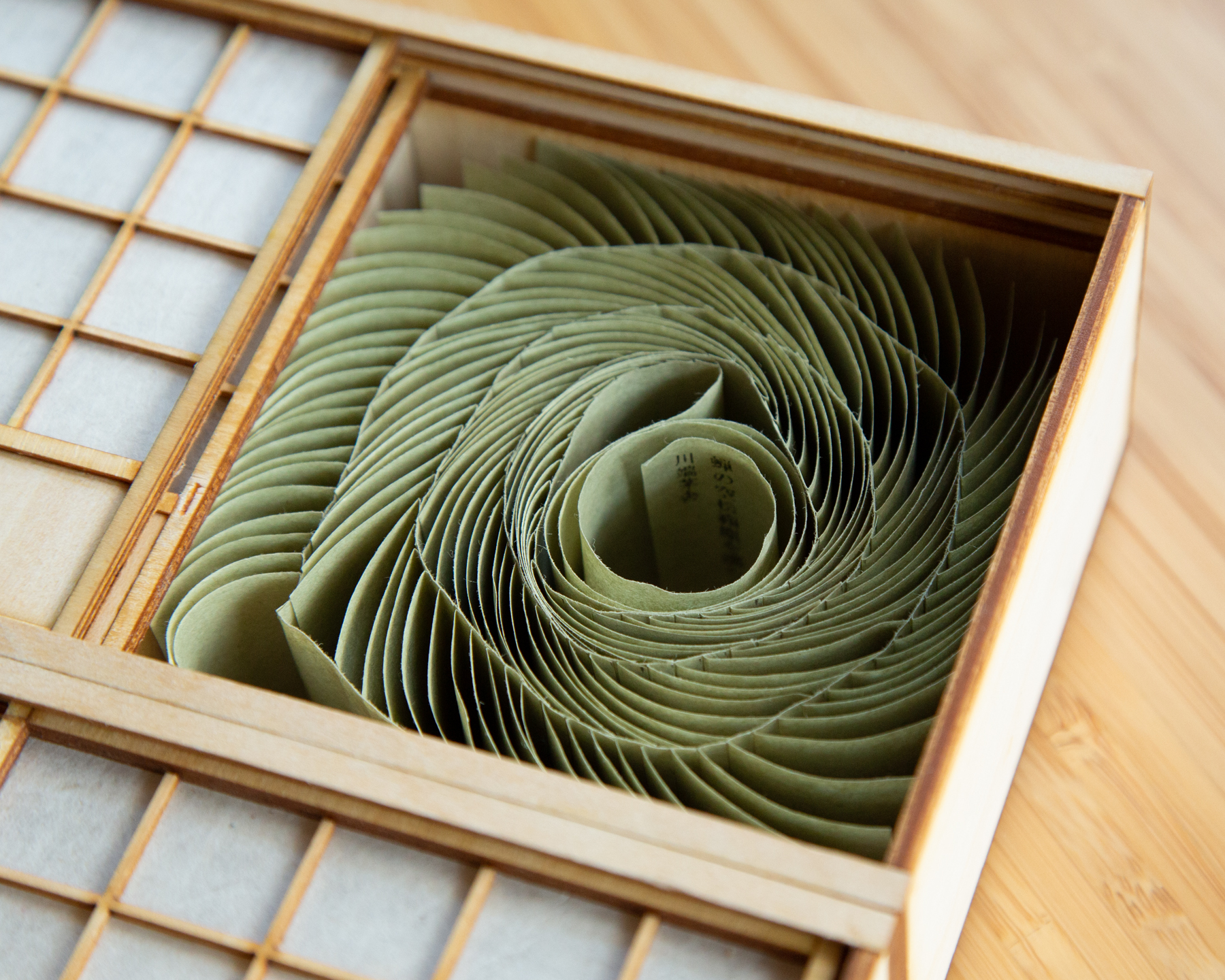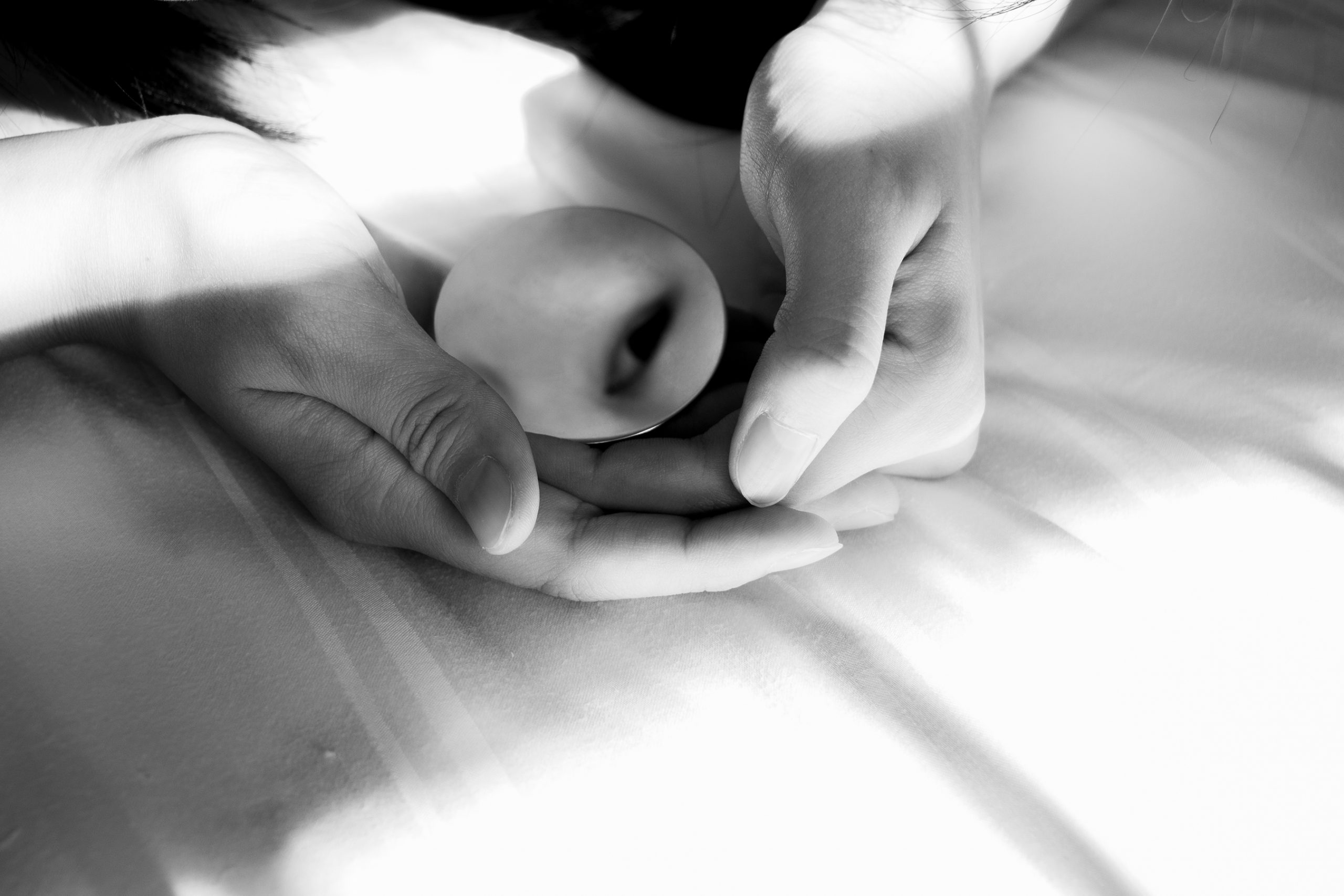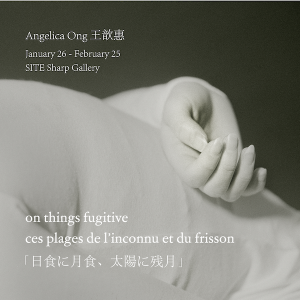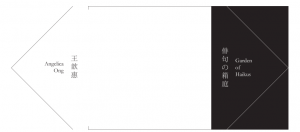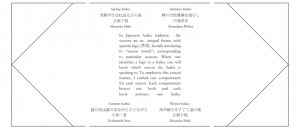on things fugitive
2023
January 26 – February 25
SITE Sharp Gallery
Photo documentation by Verónica Rosas
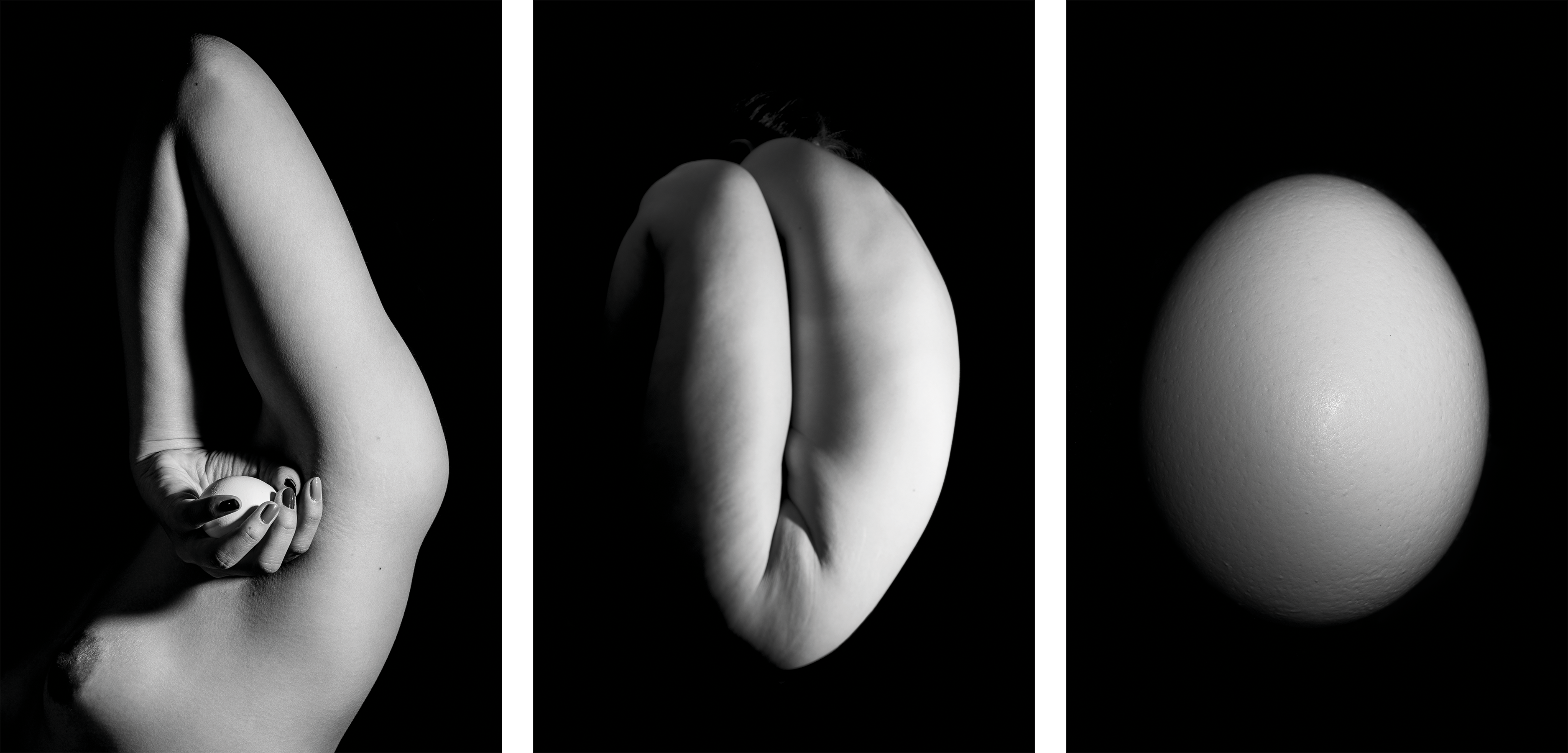
Contributing Artists
Angelica Ong
Exhibition Statement as Preserved in the SUGS/SITE Archives:
on things fugitive | ces plages de l’inconnu et du frisson |「日食に月食、太陽に残月」is a solo exhibition presenting Angelica Ong’s evolving practice in photography and bookmaking. Presenting two main aspects of her practice—slow art and language—this exhibition is a coalescence of her enthrallment with everyday marvels and her fascination with the intricacies and nuances of languages. It is an invitation to wander, to gaze at the world and examine it closely—to see what it looks like when you discover monumentality in minutiae.
This exhibition consists of several artist books and a constellation of text and images reworked from her archive as well as existing photo series. The photographs and words float in space, echoing the rhythm and pace that the artist took as she wandered in the world to capture these photographs and inviting viewers to do the same.
The books in the exhibition include Untitled (cradled edges, furled corners),「俳句の箱庭」(Garden of Haikus), Suspension, cutting breath unto air, a study of a day, tagesreste: day residue「我が影動く」, and《窗》book of windows.「俳句の箱庭」(Garden of Haikus) and cutting breath unto air demonstrate her most recent interest in Japanese haikus, particularly her interest in translating them through form rather than another language. tagesreste: day residue「我が影動く」is a photo book consisting of unique kallitype prints. a study of a day and 《窗》book of windows speak to her long-standing interest in time and duration.
Influences/themes
Slow art: Slow art is durational in the time that it requires of us. It asks for us to slow our pace and take time to observe slowly, carefully, and immerse ourselves in the work. Slow art is not experienced in just the moment we encounter it; it lingers in our memory. It often involves paring down information to the essence and providing breathing space, often resulting in a minimal visual aesthetic.
Language: Born in the multicultural city-state of Singapore, Angelica grew up in a bilingual household speaking English and Chinese and studying both in school, as is part of Singapore’s official education policy. She also grew up around Chinese dialects, Malay, and Singlish. In a country of multilingual speakers who commonly combine words from multiple languages in one sentence, having to speak purely in English (North American) and explain cultural contexts each time was a new experience for her, deepening her pre-existing fascination with language and translation. In several of her works, Angelica employs multiple languages, choosing based on their particular syntax, cultural implications, nuances, and tones, and does not provide translations of them. In doing so, she seeks to decentralize the primacy of English as an institutional language in America. She hopes to encourage viewers to take the time to find out more about the foreign language texts they are curious about, rather than rely solely on English translation which, while useful for communication and necessary for initiating cross-cultural interactions, can only ever aspire to be a report of what was said in the original language.
Surrealism: While surrealism does not actively influence the visual aesthetic of her work, it has subtle influences on her process of writing and making images. Surrealism advocates the surrender of oneself to chance, cultivating a heightened receptivity to the world, and free association. Drawing from the work of Eugène Atget, Georges Bataille, and more, Angelica has found that wandering is key to her practice, physically and psychically. Rather than taking photos to prove a preconceived concept, she takes photos to discover the concept that she was unconsciously enamored by. She uses her photographs as traces and evidence to discern what she is drawn to in retrospect, which includes notions of dissolution, consumption, indexicality, transience, fragility, and ephemerality.
________________________________
I use the term “slow art” here in reference to the publication Slow Art: The Experience of Looking, Sacred Images to James Turrell (2017). It was published by the University of California Press and written by the late Arden Reed who was Arthur and Fanny Dole Professor at Pomona College.
-Angelica Ong, 2022
Exhibition Material
Address
Sharp Gallery
37 S. Wabash Ave.
Chicago, IL, 60603
Open Hours
Monday – Friday: 12:00 – 6:00 pm
Saturday and Sundays: Closed
Holidays: Closed

